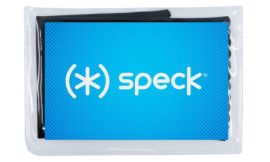Global polyurethane market is projected to witness a CAGR of 4.75% during the forecast period 2024-2031, growing from USD 80.29 billion in 2023 to USD 116.40 billion in 2031. The market is primarily driven by the growing demand for energy-efficient, light-weight, and high-performance materials, particularly from the building, construction, and automotive industries.
Polyurethanes (PU) play a significant role in numerous industries due to their versatility, durability, and adaptability. As a moldable product in various forms, polyurethanes are deployed in construction materials, automotive components, furniture, packaging, and other applications, driving the market size.
The building and construction industry serves as the largest end-user industry, where polyurethane is being used for insulation and structural reinforcement. The automotive industry plays a significant role in the shift toward lighter materials to enhance fuel efficiency and reduce emissions. Furthermore, Asia-Pacific dominates the polyurethane market due to tremendous industrial growth, rapid urbanization, and increased demand from major industries, such as automobile and construction, in countries including China and India. This region is most likely to continue its dominance during the forecast period due to the robust construction projects and automotive production being upgraded and increased, which helps to drive the market growth in the forecast period.
In August 2024, BASF SE and STOCKMEIER Urethanes USA, Inc. announced the commercial production of Stobielast S polyurethane binders for playground and recreational surfaces, utilizing 100% domestically sourced Biomass Balance (BMB) and Lupranate methylene diphenyl diisocyanate (MDI) from BASF’s facility in Geismar, Louisiana. This development marks a significant step forward in the surfacing industry, highlighting companies’ dedication to sustainability. The use of BMB Lupranate enables STOCKMEIER Urethanes to adopt eco-friendly solutions without requiring reformulations or new equipment, aligning with their goals for environmental responsibility and a circular economy. The Stobielast S line features water-based and solvent-free coatings and products certified by GREENGUARD and USDA Biobased standards.
Furniture and Bedding Sector is the Key Market Influencer for Polyurethane
The furniture and bedding sector serves as a key market influencer for polyurethane, showcasing the material’s unique qualities and exceptional versatility. Due to its durability and versatility, PU foam is widely used in furniture items, ranging from sofas and chairs to upholstered products. It provides support and flexes with body contours, thus ensuring performance over an extended period. The most popular PU foam in the bedding market for mattresses and pillows is known for its superior resilience, breathability, and temperature regulation. Furthermore, it is experiencing strong growth due to the custom and luxury furniture trend, as manufacturers seek to design stylish and functional pieces that embody changing consumer preferences.
Flexible polyurethane foam (FPF) is the largest application in the furniture and bedding market, primarily due to the increased consumption of polyurethane. FPF accounted for 79% of the total consumption of flexible polyurethane slab stock foam used in the production of soft cores for sofas and other upholstered furniture in homes. For instance, according to the American Chemistry Council 2022 report, the United States employs approximately 700 thousand tons of polyurethane in the furniture and bedding sector, which is the second largest end-user market in the country with an 18 percent share.
Light-weight Material in the Automotive Industry to Drive Market Demand
Automotive manufacturers are focusing on fuel efficiency and lower emissions vehicles. Therefore, newer automobiles are increasingly being designed with light-weight materials. Polyurethane is one of the most in-demand products as it is considerably light-weight without causing much compromise on strength and toughness. Polyurethane is used in various automobile applications, such as seating and interior components, insulation, and exterior body parts. Automotive interiors that include car seats, headliners, and door panels, utilize polyurethane, providing comfort, durability, and excellent soundproofing abilities compared to other synthetic materials. As fuel efficiency and environmental concerns become central to automotive design and manufacturing, companies are increasingly turning to lighter-weight materials to reduce carbon emissions and improve fuel economy.
The automobile industry is in higher demand for fuel-efficient vehicles. For this purpose, manufacturers use polyurethane as a high-performance material to reduce the weight of the vehicle and enhance its efficiency. For instance, according to the International Organization of Motor Vehicle Manufacturers (OICA) 2023, world production for motor vehicles recorded an upsurge of 10.71% from a total of 84.83 million units in 2022 to 93.55 million units in 2023.
Building and Construction Industry Dominates the End-user Industry for the Polyurethane Market
The major application of polyurethane as an end-user product is in the form of rigid foams used extensively for the purpose of insulation. Polyurethane finds value in the context of energy efficiency and environmental sustainability in construction applications. Strength-to-weight ratio, insulation properties superior to others, and durability make polyurethane an essential feature in the context of world construction activities. With globalizing trends and energy-efficient building, rigid polyurethane foam as an insulation material is being increasingly put into use, and the demand for high-performance, sustainable building materials has increased.
Rigid polyurethane foams are commonly used for insulated panels and for roof and wall insulation, including fillers for gaps in windows and doors. The role of polyurethane as a rigid component in construction is expected to grow, particularly in developing economies experiencing rapid urbanization and infrastructure development, as stringent energy-efficient regulations become the norm in an increasing number of countries worldwide.
Expansion of construction activities, especially in developing nations, and rising demand for green infrastructure will help the polyurethane market expand in the forecasted period. For instance, according to the United States Census Bureau, in 2022, private construction in the United States reached USD 1,434.2 billion, an increase of 11.7% from 2021, which was USD 1,279.5 billion. Residential construction spending for 2022 was at USD 899.1 billion and increased by 13.3% when compared with that of 2021, which was at USD 793.7 billion. For 2022, the non-residential construction spending was USD 530.1 billion. That was lower by 9.1% when compared with that of 2021, which was at USD 485.8 billion. For October 2023, the issued building permits stood at about 1,487,000 units. That is less than 1,555,000 units that were issued for October 2022.
Asia-Pacific to Hold the Highest Global Polyurethane Market Share
Asia-Pacific is the largest market for polyurethane. Rapid urbanization and industrialization add to the rapidly rising demands for the product, with the construction, automotive, and furniture sectors accounting for major industries. China and India are the most populous in the world, with intense and extensive infrastructure building projects, a flourishing automotive industry, and vigorous residential and commercial construction demands. China is particularly the largest construction market in the world, experiencing an unprecedented rate of urbanization. According to data from the National Bureau of Statistics of China, in 2023, the value added to the construction sector was USD 1,199.67 billion (CNY 8,569.1 billion), which grew by 7.1 percent from 2022. Such fast growth in construction has increased the requirements for high-performance materials, such as polyurethane, particularly in areas such as insulation and coatings.
Apart from construction, automobiles are another driver of demand in the Asia-Pacific market for polyurethane, especially from China and India. While China still leads the world as the biggest producer of automobiles among all automobile-producing countries, India is growing at a tremendous pace. In addition, Asia-Pacific, in the furniture and upholstery sectors, is experiencing a strengthening demand for these materials. Moreover, China is the world’s largest furniture manufacturer. Polyurethane foam is highly utilized within upholstered furniture due to comfort, durability, and very low prices. According to data from China’s National Bureau of Statistics, retail sales of furniture in China in October 2023 reached USD 1.87 billion (CNY 13.7 billion). Furthermore, according to the China National Furniture Association, the furniture industry in China is expected to grow annually by 11.57% between 2022 and 2026 and accounts for around 39% of the world’s furniture production.
Future Market Scenario (2024 – 2031F)
- Polyurethane demand is expected to grow with applications in energy-efficient buildings. The product will be part of green construction, such as insulation, sealants, and coatings, fulfilling the requirement for sustainability across the globe.
- Polyurethane will be increasingly used for insulation purposes in electronic components due to better thermal management and shock absorption capabilities to make more efficient and safe devices in electronics and appliances.
- Considering the increasing demand for light-weight yet flexible and strong materials in footwear, high growth is expected in the polyurethane market. Companies are working on more environmentally friendly polyurethane solutions to satisfy the demands of eco-conscious consumers.
- Emerging markets, especially in Asia-Pacific, South America, and Africa, rapidly develop with fast industrialization and urbanization. Therefore, a rise in polyurethane product demand in the construction and automotive sectors is expected.
Report Scope
“Polyurethane Market Assessment, Opportunities and Forecast, 2017-2031F”, is a comprehensive report by Markets and Data, providing in-depth analysis and qualitative and quantitative assessment of the current state of global polyurethane market, industry dynamics, and challenges. The report includes market size, segmental shares, growth trends, opportunities, and forecasts between 2024 and 2031. Additionally, the report profiles the leading players in the industry, mentioning their respective market share, business models, competitive intelligence, etc.
Click here:https://www.marketsandata.com/industry-reports/polyurethane-market
About Us:
Markets and Data provides a comprehensive/ panoramic understanding of markets at global, regional, and country levels. Examine changing consumer preferences, emerging challenges, underlying trends, and growth prospects to accelerate your business strategies.
Contact
Mr. Vivek Gupta
5741 Cleveland street,
Suite 120, VA beach, VA, USA 23462
Tel: +1 (757) 343-3258
Email: [email protected]
Website: https://www.marketsandata.com
aa




